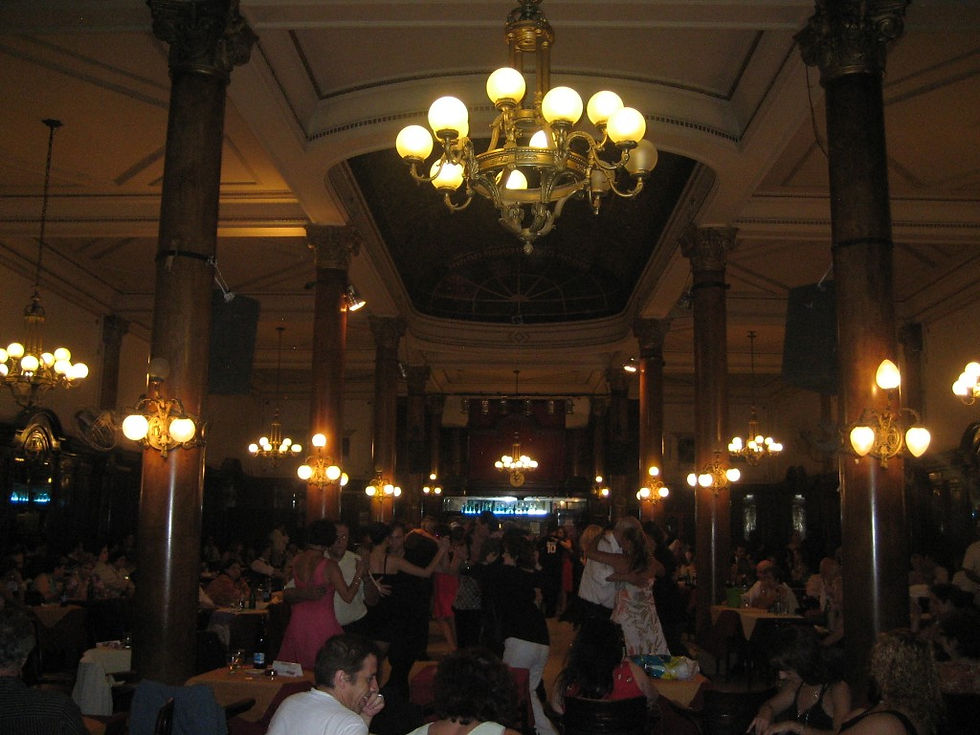The Mystery of The Milonga
- John Lowry
- May 14, 2022
- 2 min read

It’s always a pleasant surprise when experiences and ideas come together. We have often discussed how classic Tango is an introverted, introspective dance - a private, silent conversation between two people.
At the same time, we are acutely aware of the mysterious energy of the milonga that is a direct result of a large group of people silently communicating in a much larger “dance”.
It’s not an uncommon phenomenon. People who have studied recent developments in neurology, ‘flow’ states and similar phenomena recognise and understand it. It is a well known and well researched experience for meditators.
A recent Facebook post on London Tango, after a holiday in Buenos Aires, prompted me to re-consider this fascinating phenomenon in the context of Tango. Here are a few excerpts:-
“I used to see floorcraft purely as a matter of courtesy, but in BsAs I came to appreciate that it’s much more than that. It’s about dancing with the other couples as well as your partner. Not just in the deliciously romantic ideal of the whole ronda moving as one, but in the very practical sense of creating spaces for those next to us, and using the spaces they create for us. When people are aware of those around them, and play with space in that way, dancing in a crowded milonga actively contributes to the enjoyment of the dance…I really did feel we were dancing with those couples too. I realised this time that this is fundamental to the experience of dancing tango in BsAs.?.. It’s about the difference between dancing in your own little bubble, and social dancing”.
This person really “picked up” on this unique dynamic. Those who dance with us will know how we emphasise the direct connection between adjacent couples as a key part of the male role in Tango for just this reason.

Once again, Tango, because of its unique accident of time and place, distilled human interaction, at different levels, into a potent energy.
The tragedy of Tango is that it is extremely difficult to transfer this feeling to other cultures, times and places, however hard we might try. The banal responses to the London Tango Facebook post are evidence of the difficulty in translation, as is the speed at which the dance changed to a simpler concept (albeit with more complex choreography). whenever it was exported. When one considers that competitive Ballroom Tango, codified in the UK by 1920, not remotely recognised as a derivation of Argentine Tango, it’s easy to see how history repeats.

Indeed, as Ricardo Vidort noted, there are very few people, even in Buenos Aires, who really “get it”.
Tango is not there for the taking…you must let it come to you.
For those who do, a lifetime of intrigue and delight can be found.
Comments